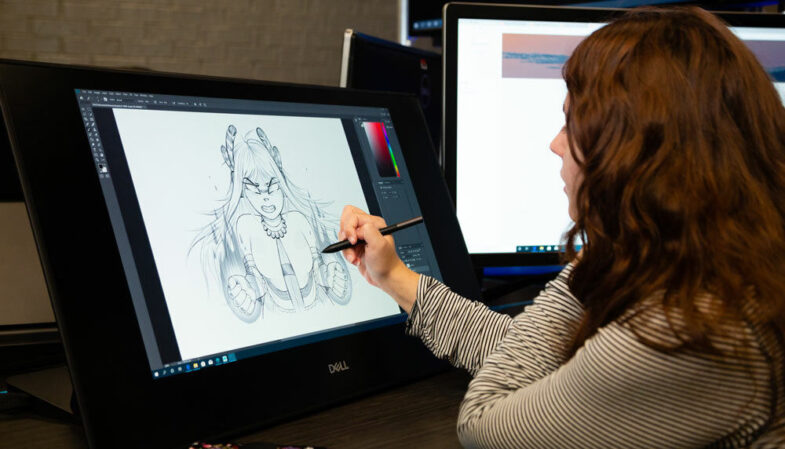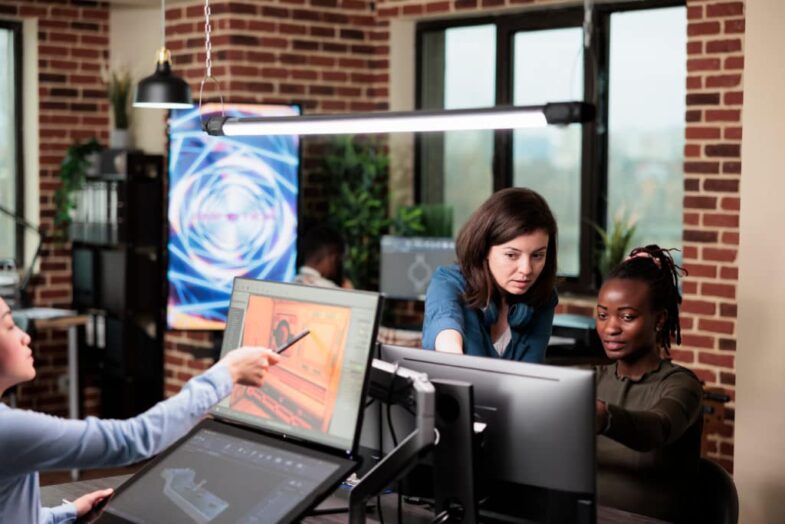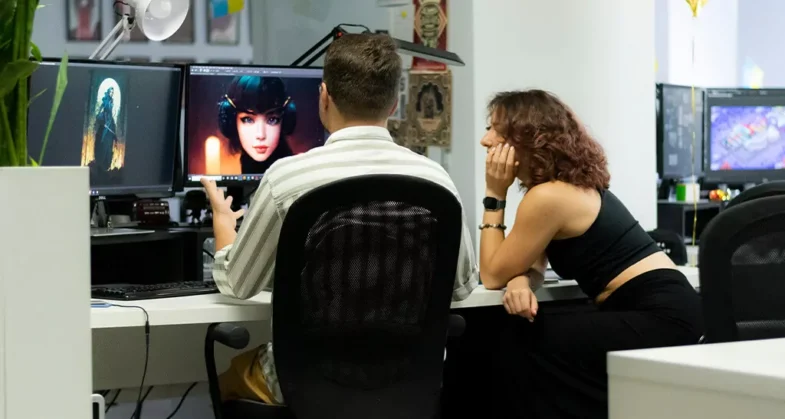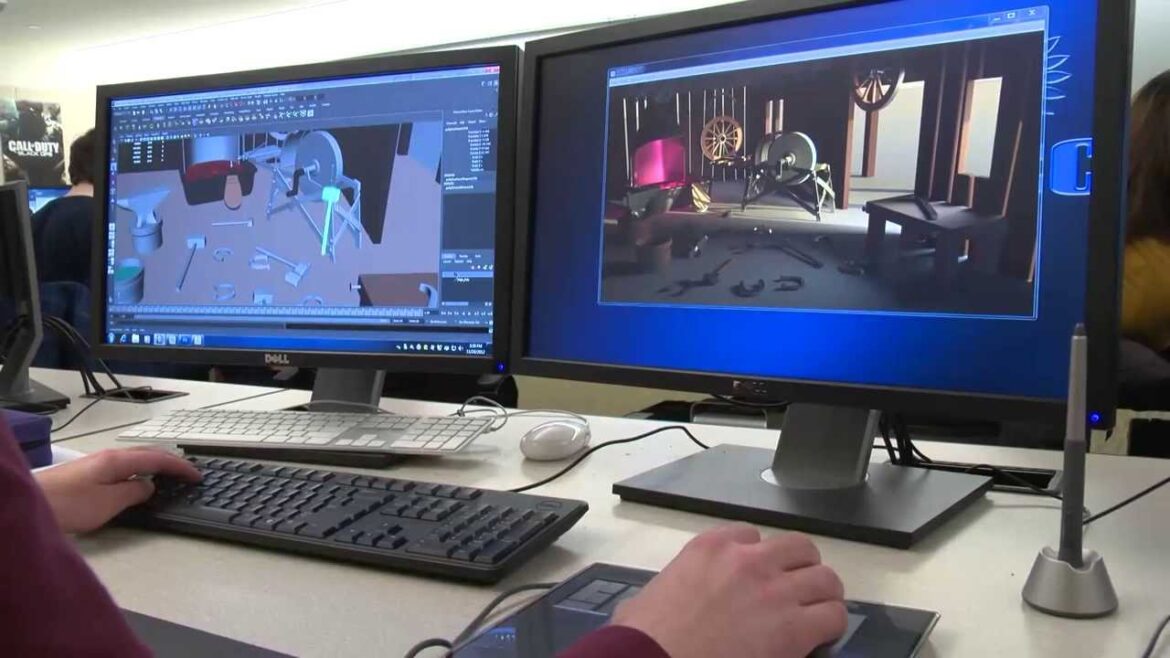If you love video games and have a knack for drawing, you can consider pursuing a career in game art and animation. Besides, video games aren’t just all about coding. Even though you know that video games consist of a bunch of code, it’s the game art that brings life to them. And these pieces of art are made either by game art studios or game art outsourcing companies.
Video game art is also the very first thing you see in games! These include your favorite game’s highly-detailed character designs and picturesque environments. Furthermore, the game’s graphics are also why you’re likely immersed in playing your favorite video game in the first place.
Do you think you have what it takes to create stunning game art? If so, read this complete guide to game art animation to find out everything you need to know!
What to Know About Game Art and Animation?

Source: pinterest.com
Game art and animation refer to all the visual elements present in a game, whether two-dimensional or three-dimensional. These visual elements include the following:
- Character designs of playable characters, NPCs, and enemies
- Game user interface
- In-game objects like weapons, vehicles, props, etc.
- Game storyboards
- Game environment design
- In-game weather effects
And many more.
Basically, it’s all the things you can see with your own two eyes as you play a game. And all of those visual elements are created by game artists. These game artists create the initial sketches and develop them according to the game’s designated style and requirements.
But then again, the game artist is a general title with various specializations. Although you can become proficient in more than one field, you can also choose to focus on a single specialization. For instance, you can focus solely on animation or character modeling. It’s all up to you.
That said, if you’re interested in pursuing a game artist career, you should also know and understand the different types and subfields involved in game art and figure out which type and subfield you’d like to pursue.
Different Types of Game Art

Source: youtube.com
Whether you’re an avid fan of many games or not, you’d know that different video games utilize different types of game art. Here they are below:
- Pixel Art: A type of game art made using pixels or individual square-shaped building blocks.
- Vector Art: A type of game art made using different math formulas to create different points, lines, and curves.
- Raster Art: Similar to pixel art, raster art utilizes pixels in rows and columns, resulting in art with what is considered a general view.
- 3D Art: A form of game art that utilizes three-dimensional shapes by manipulating flat polygons with points, edges, and faces.
Different Subfields of Game Art
- Concept Art: Concept art mainly involves the creation of initial designs of characters, backgrounds, cut scenes, and the like. Concept arts give game artists an idea of how the game looks or feels.
- Character Art: As you guessed, character art involves the creation of designs for a game’s playable characters, non-playable characters, and enemies.
- Background Art: Background art consists of elements you see in a game’s particular setting and location. These elements include buildings, terrain, skies, plants, and other elements that determine a place’s overall atmosphere.
- Object Art: Besides backgrounds, object art refers to the several in-game items you may or may not interact with within the game. These include decorations, weapons,
- Texture Art: As its name implies, texture art provides more artistic control and realism to a game’s visual elements. Texture art is primarily involved in making 3D visual elements.
- Visual Effects: Visual effects are special imagery you won’t find in the real world that provides a dynamic feel to the game. They are considered neither objects nor characters.
- UI/UX Art: UI/UX includes a game’s inventory layout, mini-maps, and the like. These elements need to be created in a way they’re easily navigated and understood by players.
- Animation: This involves creating accurate motion or movement for several characters, items, and the like in video games.
What Do You Need to Become a Game Artist?

Source: youtube.com
Just like entering a boss domain in games, you can’t come in unprepared if you enter the world of game art. That said, these are the things you need to become a game artist below:
1. Strong drawing skills
Of course, you will need to have strong drawing skills to get hired for the job. And beyond creativity, the ability to visualize concepts, and excellent technique, you must also be skilled in using different software involved in game art creation. These include Adobe Photoshop, Blender, ZBrush, and many more.
But if you’ve never created art, don’t worry. If you’re still a newbie artist, there’s still room to develop your skills. Some things you can do include taking art classes, self-studying using online/offline resources, and finishing a related degree.
2. A huge passion for drawing
Even if you’re a skilled artist, you must ensure that you absolutely enjoy drawing. After all, drawing as a hobby is entirely different when you turn it into your career. Besides, as a game artist, you will draw for hours and have to commit to strict deadlines. If you only draw when you feel like doing so, you might have to reconsider your dream of becoming a game artist.
3. Training and practice
Although your passion and talent can take you to places, many employers prefer hiring candidates with proper training, such as having a degree in a related field. Most companies prefer hiring those with a bachelor’s degree in computer science, game design, and mathematics.
4. A resume and portfolio of your works
Besides preparing a comprehensive resume of your art skills, it’s also important to prepare a portfolio that best showcases your abilities as a game artist. With a portfolio, you can prove your skill to employers and convince them that you’re the perfect candidate for the position!
If you don’t have a portfolio, you can start by developing simple projects, such as creating a mini-game or a collection of different character design concepts. From there, you can compile the ones that best showcase your skills and put them in your portfolio.
5. Excellent communication and teamwork skills
Contrary to what you’re thinking, you won’t be working alone as a game artist. Whether you’re an in-house artist or part of a game art outsource company like Pingle Studio, you need to cooperate with fellow artists to work towards a project’s goal. Therefore, you must also be open to feedback and suggestions from people you work with. After all, communication is key.
Game Art Outsource Company vs. Game Art Studio: Knowing Their Differences

Source: youtube.com
Besides the information above, you should also know the differences between a game art studio and a game art outsource company. The former entails you working with an in-house production team. As part of the said team, you will only develop projects for the company you’re working for.
As an in-house game artist, you also work full-time if you get accepted by the company you’re applying for. However, for many game companies, forming a full team of game artists can consume too much time and resources. That said, this is where companies that provide outsource animation services come into the picture.
A game art outsource company is one that provides outsource animation services to those who may need them. As part of an outsourcing company, you are considered an external team by a company hiring you for a specific project. Most game companies prefer outsourcing game artists to save time and resources in assembling a team and training qualified employees.
Furthermore, by working in a game art outsource company, you will only work with a particular company for the expected duration of the projects they will hand out to you. This also means you get to work on a wide variety of game projects, unlike when working as an in-house game artist for a particular company.
Overall, the best route depends on your preferences as a game artist. After fully understanding their differences, you can weigh their corresponding pros and cons to determine which route suits your preferences better.
Final Takeaways
Like many jobs, becoming a game artist isn’t an easy career path. But if you believe you’re qualified and know you’ll enjoy this job, you should give it a shot! And just like how you make the necessary preparations to overcome a difficult level, you’d also need to come prepared when applying for a game art studio. Best of luck!
